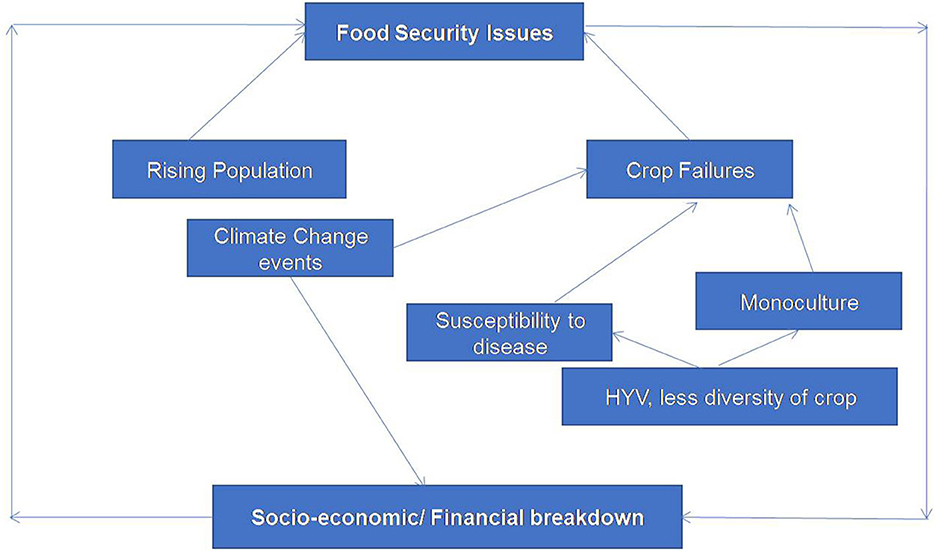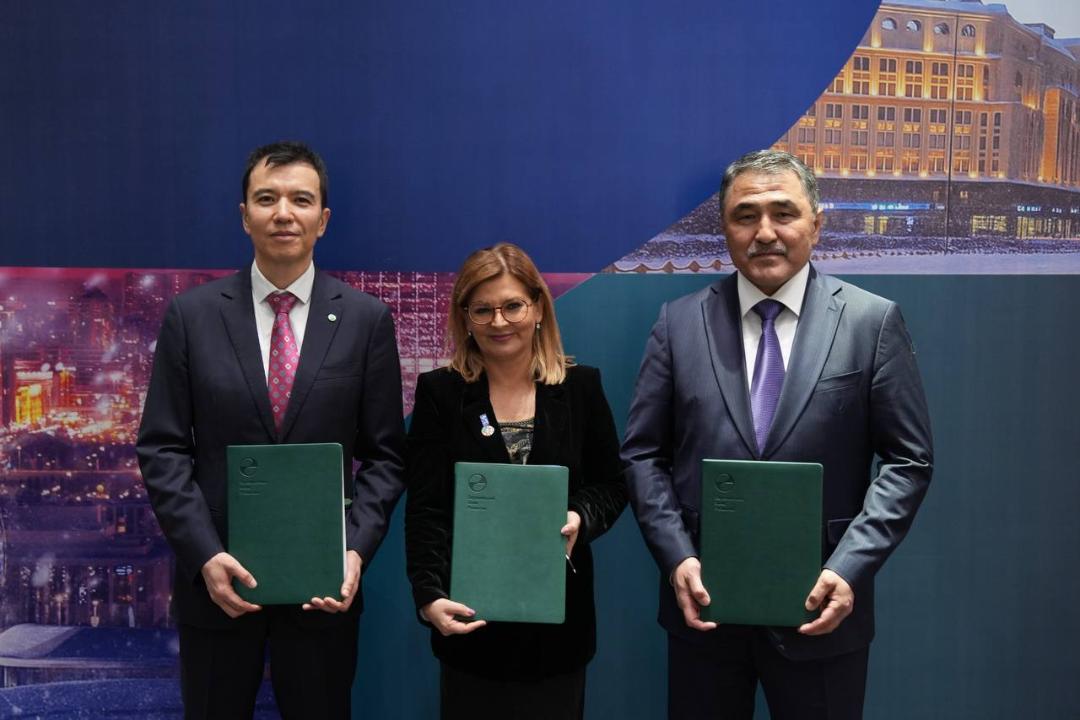Georgia lands new Pilgrim’s food plant, boosting economy and job growth – Grice Connect

Pilgrim’s Investment in Georgia: A Catalyst for Sustainable Development
Introduction
A major food production company, Pilgrim’s, has announced a significant investment in Northwest Georgia, aligning with several key United Nations Sustainable Development Goals (SDGs). The project involves the construction of a new prepared foods plant in Walker County, backed by a $400 million investment. This initiative is projected to substantially boost the regional economy and support long-term sustainable growth.
Economic Growth and Decent Work (SDG 8)
The development serves as a prime example of investment in local economies to foster job creation and economic prosperity, a core target of SDG 8. The project’s primary contributions include:
- A $400 million capital investment into the region’s industrial base.
- The creation of over 630 new jobs for the local community by the time the plant reaches full operational capacity.
- Reinforcement of the state’s primary industry, agriculture, which drives continued economic advancement and provides quality employment opportunities for Georgians.
- Expansion of Pilgrim’s existing footprint, which already supports approximately 7,500 jobs across seven production facilities in the state.
Industry, Innovation, and Food Security (SDG 9 & SDG 2)
This investment represents a strategic advancement in industrial infrastructure and food production, contributing to both SDG 9 (Industry, Innovation, and Infrastructure) and SDG 2 (Zero Hunger). The new facility will enhance the food supply chain by producing a variety of fully cooked chicken products. This contributes to a more resilient and innovative food industry, which is essential for ensuring access to safe and nutritious food. The plant’s focus on prepared foods supports a modern approach to food production and consumption.
Partnerships for the Goals (SDG 17)
The successful planning and execution of this project underscore the importance of multi-stakeholder collaboration, a principle central to SDG 17. The initiative was facilitated through a strategic partnership involving several key entities:
- The Pilgrim’s corporation, providing the private sector investment.
- The State of Georgia, including the Governor’s Office and the Department of Economic Development’s Global Commerce team.
- The Walker County Development Authority, representing local community interests.
- The Technical College System of Georgia’s Quick Start program, ensuring workforce development and training.
This collaborative model demonstrates a commitment to achieving sustainable development through unified public-private efforts.
Workforce Development and Future Opportunities
Hiring for the new positions is scheduled to commence in 2027. The involvement of the Quick Start program ensures that the local workforce will receive specialized training, aligning with the SDG 8 target of promoting skills for productive employment. Interested individuals can find more information on career opportunities at jobs.pilgrims.com.
1. Which SDGs are addressed or connected to the issues highlighted in the article?
The article primarily highlights issues and initiatives that connect to the following Sustainable Development Goals (SDGs):
- SDG 8: Decent Work and Economic Growth: This is the most prominent SDG in the article, which focuses on a major economic investment, job creation, and the growth of a key state industry.
- SDG 9: Industry, Innovation, and Infrastructure: The construction of a new food production plant is a direct investment in industrial infrastructure and is framed as part of a long-term growth strategy involving innovation.
- SDG 1: No Poverty: The creation of a significant number of jobs is a direct mechanism for poverty reduction by providing stable incomes to individuals and families in the local community.
- SDG 2: Zero Hunger: While the connection is less direct, the article discusses the expansion of a food company that produces “fully cooked chicken products,” which contributes to the overall food supply chain.
2. What specific targets under those SDGs can be identified based on the article’s content?
Based on the information provided, the following specific targets can be identified:
SDG 8: Decent Work and Economic Growth
- Target 8.1: Sustain per capita economic growth. The article mentions a “$400 million investment” which is a direct contribution to the economic growth of the region. Governor Kemp’s statement that the project will “drive growth” reinforces this connection.
- Target 8.2: Achieve higher levels of economic productivity through diversification, technological upgrading and innovation. The article notes the company’s goal is to “allow further growth of our prepared foods business” and mentions “continued innovations,” pointing towards specialization and upgrading within the agriculture industry.
- Target 8.5: By 2030, achieve full and productive employment and decent work for all. The project is “expected to create more than 630 jobs,” and Governor Kemp refers to them as “quality jobs,” directly addressing this target of creating employment opportunities.
SDG 9: Industry, Innovation, and Infrastructure
- Target 9.2: Promote inclusive and sustainable industrialization and significantly raise industry’s share of employment. The core of the article is the announcement that a company “will build a plant to produce prepared foods,” which is a clear act of industrialization that will increase manufacturing employment in Walker County.
SDG 1: No Poverty
- Target 1.2: By 2030, reduce at least by half the proportion of men, women and children of all ages living in poverty in all its forms according to national definitions. The creation of “more than 630 jobs” provides a direct pathway out of poverty for hundreds of families through stable employment and income.
SDG 2: Zero Hunger
- Target 2.1: By 2030, end hunger and ensure access by all people… to safe, nutritious and sufficient food all year round. The new plant will “produce a variety of fully cooked chicken products,” contributing to the availability and supply of food products in the market.
3. Are there any indicators mentioned or implied in the article that can be used to measure progress towards the identified targets?
The article contains several quantitative and qualitative data points that can serve as or imply indicators for measuring progress:
SDG 8: Decent Work and Economic Growth
- Implied Indicator for Target 8.1: The “$400 million investment” serves as a direct monetary input that can be used to measure progress towards economic growth (related to Indicator 8.1.1: Annual growth rate of real GDP per capita).
- Implied Indicator for Target 8.5: The “more than 630 jobs” to be created is a direct measure of employment generation (related to Indicator 8.5.2: Unemployment rate). The mention of “quality jobs” implies a focus on decent work conditions, though no specific wage data is provided.
SDG 9: Industry, Innovation, and Infrastructure
- Implied Indicator for Target 9.2: The creation of a new plant and “more than 630 jobs” in the food production sector directly contributes to metrics like manufacturing employment (Indicator 9.2.2: Manufacturing employment as a proportion of total employment).
SDG 1: No Poverty
- Implied Indicator for Target 1.2: The number of jobs created (“more than 630”) is an indirect indicator. By tracking the employment status of these new hires, one could measure the project’s impact on reducing the local poverty rate (related to Indicator 1.2.1: Proportion of population living below the national poverty line).
SDG 2: Zero Hunger
- Implied Indicator for Target 2.1: The output of the plant (“a variety of fully cooked chicken products”) can be seen as an indicator of an increased food supply. However, the article does not provide specific production volumes or details on distribution that would be needed for a formal indicator.
4. Create a table with three columns titled ‘SDGs, Targets and Indicators” to present the findings from analyzing the article.
| SDGs | Targets | Indicators (Mentioned or Implied in Article) |
|---|---|---|
| SDG 8: Decent Work and Economic Growth |
|
|
| SDG 9: Industry, Innovation, and Infrastructure |
|
|
| SDG 1: No Poverty |
|
|
| SDG 2: Zero Hunger |
|
|
Source: griceconnect.com

What is Your Reaction?
 Like
0
Like
0
 Dislike
0
Dislike
0
 Love
0
Love
0
 Funny
0
Funny
0
 Angry
0
Angry
0
 Sad
0
Sad
0
 Wow
0
Wow
0












































































